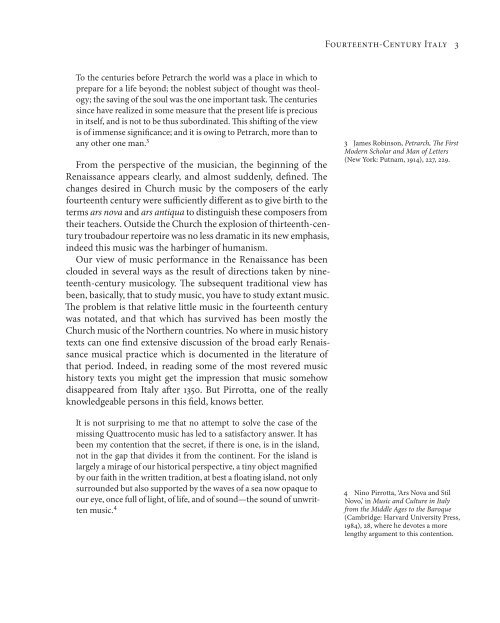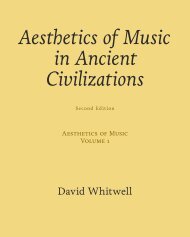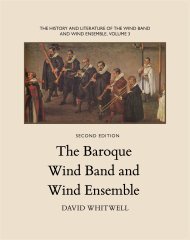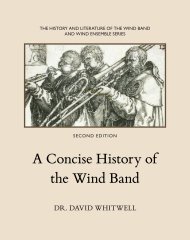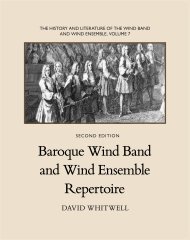Aesthetics vol 3 preview.pdf - Whitwell Books
Aesthetics vol 3 preview.pdf - Whitwell Books
Aesthetics vol 3 preview.pdf - Whitwell Books
Create successful ePaper yourself
Turn your PDF publications into a flip-book with our unique Google optimized e-Paper software.
Fourteenth-Century Italy 3To the centuries before Petrarch the world was a place in which toprepare for a life beyond; the noblest subject of thought was theology;the saving of the soul was the one important task. The centuriessince have realized in some measure that the present life is preciousin itself, and is not to be thus subordinated. This shifting of the viewis of immense significance; and it is owing to Petrarch, more than toany other one man. 3From the perspective of the musician, the beginning of theRenaissance appears clearly, and almost suddenly, defined. Thechanges desired in Church music by the composers of the earlyfourteenth century were sufficiently different as to give birth to theterms ars nova and ars antiqua to distinguish these composers fromtheir teachers. Outside the Church the explosion of thirteenth-centurytroubadour repertoire was no less dramatic in its new emphasis,indeed this music was the harbinger of humanism.Our view of music performance in the Renaissance has beenclouded in several ways as the result of directions taken by nineteenth-centurymusicology. The subsequent traditional view hasbeen, basically, that to study music, you have to study extant music.The problem is that relative little music in the fourteenth centurywas notated, and that which has survived has been mostly theChurch music of the Northern countries. No where in music historytexts can one find extensive discussion of the broad early Renaissancemusical practice which is documented in the literature ofthat period. Indeed, in reading some of the most revered musichistory texts you might get the impression that music somehowdisappeared from Italy after 1350. But Pirrotta, one of the reallyknowledgeable persons in this field, knows better.It is not surprising to me that no attempt to solve the case of themissing Quattrocento music has led to a satisfactory answer. It hasbeen my contention that the secret, if there is one, is in the island,not in the gap that divides it from the continent. For the island islargely a mirage of our historical perspective, a tiny object magnifiedby our faith in the written tradition, at best a floating island, not onlysurrounded but also supported by the waves of a sea now opaque toour eye, once full of light, of life, and of sound—the sound of unwrittenmusic. 43 James Robinson, Petrarch, The FirstModern Scholar and Man of Letters(New York: Putnam, 1914), 227, 229.4 Nino Pirrotta, ‘Ars Nova and StilNovo,’ in Music and Culture in Italyfrom the Middle Ages to the Baroque(Cambridge: Harvard University Press,1984), 28, where he devotes a morelengthy argument to this contention.


